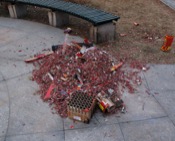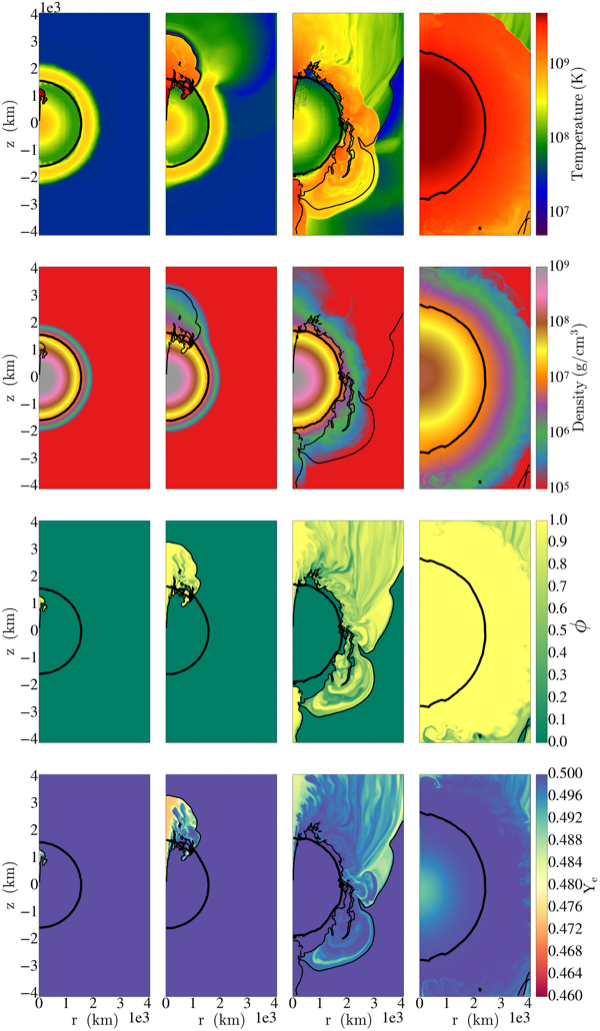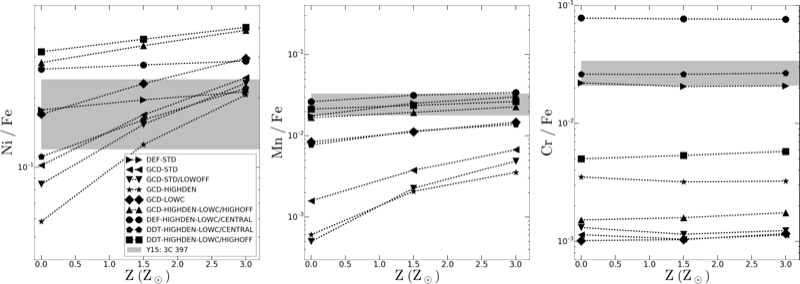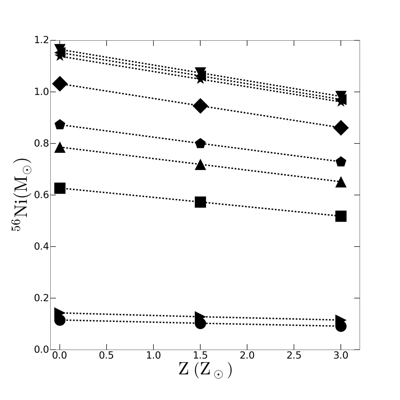
|
Cococubed.com
|
| Supernova Remnant Metallicity |
Home
Astronomy research
Software Infrastructure:
MESA
FLASH-X
STARLIB
MESA-Web
starkiller-astro
My instruments
Neutrino Emission:
Neutrinos from de-excitation
Neutrino emission from stars
Identifying the Pre-SN
Neutrino HR diagram
Pre-SN Beta Processes
Pre-SN neutrinos
White dwarf pulsations:
12C(α,γ) & overshooting
Probe of 12C(α,γ)16O
Impact of 22Ne
Impact of ν cooling
Variable white dwarfs
MC reaction rates
Micronovae
Novae
White dwarf supernova:
Stable nickel production
Remnant metallicities
Colliding white dwarfs
Merging white dwarfs
Ignition conditions
Metallicity effects
Central density effects
Detonation density
Tracer particle burning
Subsonic burning fronts
Supersonic fronts
W7 profiles
Massive stars:
Pop III with HST/JWST
Rotating progenitors
3D evolution to collapse
MC reaction rates
Pre-SN variations
Massive star supernova:
Yields of radionuclides
26Al & 60Fe
44Ti, 60Co & 56Ni
SN 1987A light curve
Constraints on Ni/Fe
An r-process
Effects of 12C +12C
Neutron Stars and Black Holes:
Black Hole spectrum
Mass Gap with LVK
Compact object IMF
He burn neutron stars
Stars:
Hypatia catalog
SAGB stars
Nugrid Yields I
He shell convection
BBFH at 40 years
γ-rays within 100 Mpc
Iron Pseudocarbynes
Pre-Solar Grains:
C-rich presolar grains
SiC Type U/C grains
Grains from massive stars
Placing the Sun
SiC Presolar grains
Chemical Evolution:
Radionuclides in 2020s
Zone models H to Zn
Mixing ejecta
Thermodynamics, Opacities & Networks
Radiative Opacity
Skye EOS
Helm EOS
Five EOSs
Equations of State
12C(α,γ)16O Rate
Proton-rich NSE
Reaction networks
Bayesian reaction rates
Verification Problems:
Validating an astro code
Su-Olson
Cog8
Mader
RMTV
Sedov
Noh
Software Instruments
2026 AAS Journals
AAS YouTube
Listing of 500+ Author Videos
AAS Peer Review Workshops
Outreach Material
Education Material
Other Stuff:
Bicycle Adventures
Illustrations
Presentations
Contact: F.X.Timmes
my one page vitae,
full vitae,
research statement, and
teaching statement.
The physical process whereby a carbon-oxygen white dwarf explodes as a Type Ia supernova (SN Ia) remains highly uncertain. The degree of neutronization in SN Ia ejecta holds clues to this process because it depends on the mass and the metallicity of the stellar progenitor, and on the thermodynamic history prior to the explosion.
In this article we report on a new method to determine ejecta neutronization using Ca and S lines in the X-ray spectra of Type Ia supernova remnants (SNRs). Applying this method to Suzaku data of Tycho, Kepler, 3C 397 and G337.2-0.7 in the Milky Way, and N103B in the Large Magellanic Cloud, we find that the neutronization of the ejecta in N103B is comparable to that of Tycho and Kepler, which suggests that progenitor metallicity is not the only source of neutronization in SNe Ia.
We then use a grid of SN Ia explosion models to infer the metallicities of the stellar progenitors of our SNRs. The implied metallicities of 3C 397, G337.2-0.7, and N103B are major outliers compared to the local stellar metallicity distribution functions, indicating that progenitor metallicity can be ruled out as the origin of neutronization for these SNRs. Although the relationship between ejecta neutronization and equivalent progenitor metallicity is subject to uncertainties stemming from the $^{12}$C$\,$+$^{16}$O reaction rate, which affects the Ca/S mass ratio, our main results are not sensitive to these details.

|

|

|

|
Constraining The Single-Degenerate Channel of Type Ia Supernovae With Stable Iron-Group Elements in SNR 3C 397 (2017)
Recent Suzaku X-ray spectra of SNR 3C 397 indicate enhanced stable iron-group element abundances of Ni, Mn, Cr, and Fe. Seeking to address key questions about the progenitor and explosion mechanism of 3C 397, in this article we compute nucleosynthetic yields from a suite of multidimensional hydrodynamics models in the near-Chandrasekhar mass, single-degenerate paradigm for supernova Type Ia.
Varying the progenitor white dwarf internal structure, composition, ignition, and explosion mechanism, we find the best match to the observed iron-peak elements of 3C 397 are dense (central density $\ge$ 6$\times$10$^{9}$ g cm$^{-3}$), low-carbon white dwarfs that undergo a weak, centrally-ignited deflagration, followed by a subsequent detonation. The amount of $^{56}$Ni produced is consistent with a normal or bright normal supernova Type Ia. A pure deflagration of a centrally-ignited, low central density ($\simeq$ 2$\times$10$^{9}$ g cm$^{-3}$) progenitor white dwarf, frequently considered in the literature, is also found to produce good agreement with 3C 397 nucleosynthetic yields, but leads to a subluminous SN Ia event, in conflict with X-ray linewidth data. Additionally, in contrast to prior work which suggested a large super-solar metallicity for the white dwarf progenitor for SNR 3C 397, we find satisfactory agreement for solar and sub-solar metallicity progenitors. We discuss a range of implications our results have for the single-degenerate channel.

|

|

|